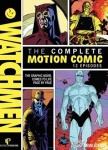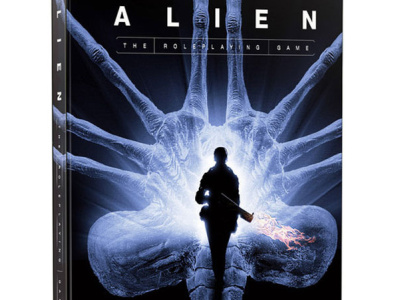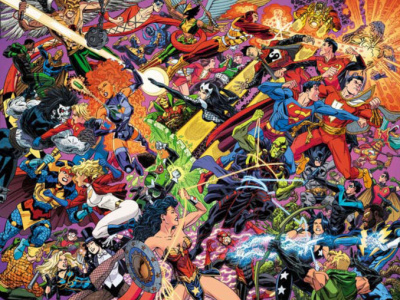
Watchmen: The Complete Motion Comic
Warner Brothers
Authors: Alan Moore, Dave Gibbons
Director: Jake Hughes
Narrator: Tom Stechschulte
Release Date: March 3rd, 2009
Price: DVD $29.99, Blu-ray $35.99
Running Time: 325 minutes
ISBN: 1-4198-8010-1
Age Rating: For Mature Audiences
On Tuesday March 3rd Warner Bros. Home Video is releasing a two-disc DVD version of Watchmen: The Complete Motion Comic (MSRP $29.99, Blu-ray $35.99, see "Watchmen Motion Comic DVD Release March 3rd"). Episodes have previously been made available on iTunes and other DTO venues.
Given that comic books with their marriage of words and pictures are already a “hybrid” art form that has taken decades to gain any sort of intellectual credibility, it is not surprising that this example of a “motion comic,” which features the overlaying of two other modern disciplines, animation and an audio books-like single narrator/actor, on what is an acknowledged classic graphic novel has provoked strong (and not always positive) reactions.
On the positive side, the Watchmen Motion Comic is certainly something that any collector who has acquired more than one version of Alan Moore and Dave Gibbons’ graphic novel will want to own. In addition to a nearly complete rendering of the graphic novel (some minor elisions of dialogue from the panels were made, and the fascinating prose addenda that Moore added to each issue of the comic are missing as well), the package includes a “movie cash” coupon for $7.50 towards a ticket to the Watchmen film, which serves the purpose of lowering the cost of the motion comic for collectors who want to see Zach Snyder’s live action adaptation, which opens on March 6th.
With a running time of over five hours, the Watchmen Motion Comic is also a far more complete version of the Watchmen saga than Zach Snyder’s live action version could ever be. The CG animation in the motion comic, which was created under the supervision of Dave Gibbons, also produces some excellent effects, most notably the constantly shifting inkblot formations on Rorschach’s mask. The meta-comic, Tales of the Black Freighter, is well-presented in bright primary-hued four-color panels overlaid with moray patterns to provide a useful visual distinction from the rest of the action. And the overlapping dialogue between the EC-like narration of the pirate comic and the comments of the newsstand vendor come off beautifully in the motion comic format.
The decision to leave the word balloons in the motion comic was also correct, since being able to read
The most obvious problems with the motion comic adaptation stem from the limitations imposed on the project by having one audio book-like narrator who provides all the voices. Though Stechschulte does perform well overall (and especially in the Dr. Manhattan sequences), his “female” voices are off-putting to all but the hardened devotees of books-on-tape or chapter-a-day type literary readings.
But, starting with the limitations imposed by the widescreen format, there are also major problems with the motion comics’ visuals, in spite of the fact that Dave Gibbons’ artwork is used throughout. The animation used in the Watchmen Motion Comic creates a planar effect that destroys the depth in the panels that a solidly realistic artist like Gibbons provides through single point perspective. And this loss really matters, preventing, at least for this viewer, that essential comic book reading act of entering into the world that is being depicted; and in no comic has the “environment” of the action with its graphitti and advertisements ever been more important than in Watchmen.
Perhaps this iteration of the motion comic medium would be best utilized for some sort of Brechtian project since the limited animation, with its flat planar elements and repeated head-bobbing movements, creates hundreds of alienation effects that constantly remind the viewer that he or she is watching a motion comic.
Precisely because of these alienation effects, the structure of Watchmen, with its intertwined origin stories, was never more evident to this viewer than it was in this motion comic format. While the Watchmen Motion Comic is clearly not going to please everyone, it is an interesting experiment that poses many questions. Would a version with a complete voice cast, fully-rendered animation, and a music score that reflected the period and the text satisfy its critics, or is there something about a work created, as Alan Moore has said, specifically for the comics medium that ultimately defies this sort of translation into other media?
Tom Flinn







